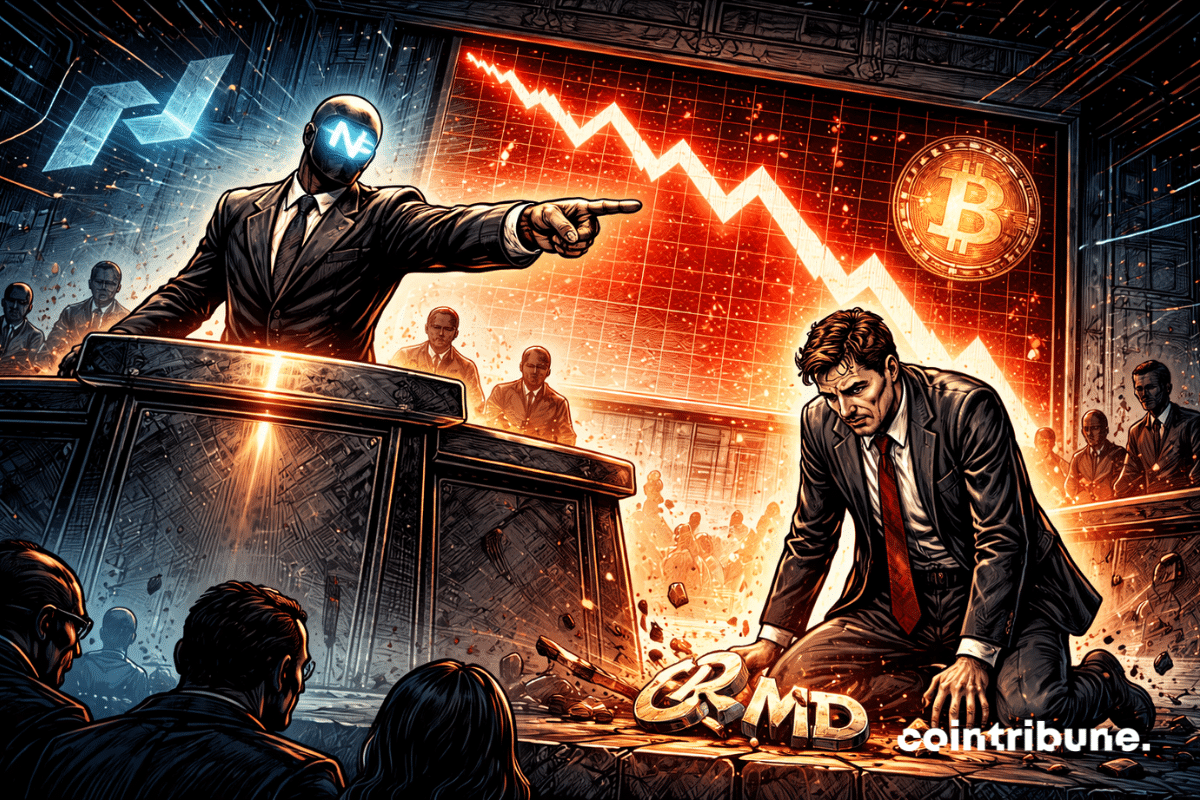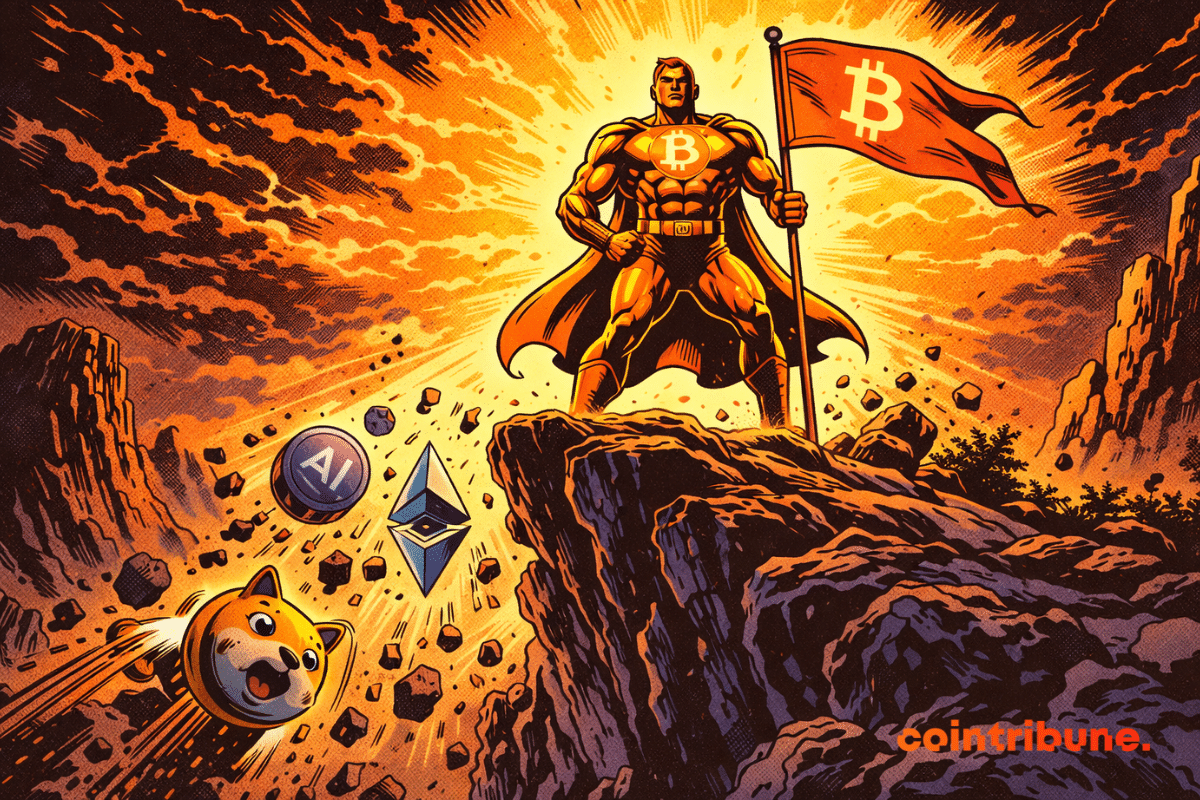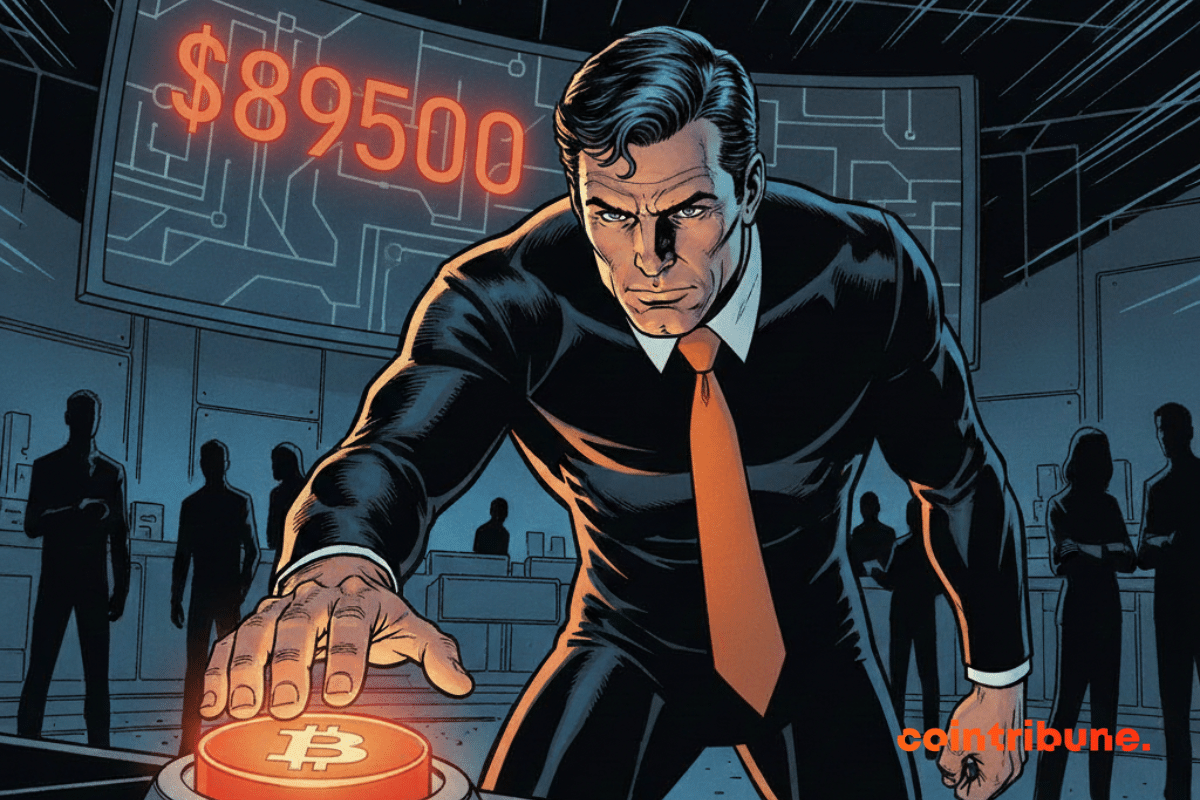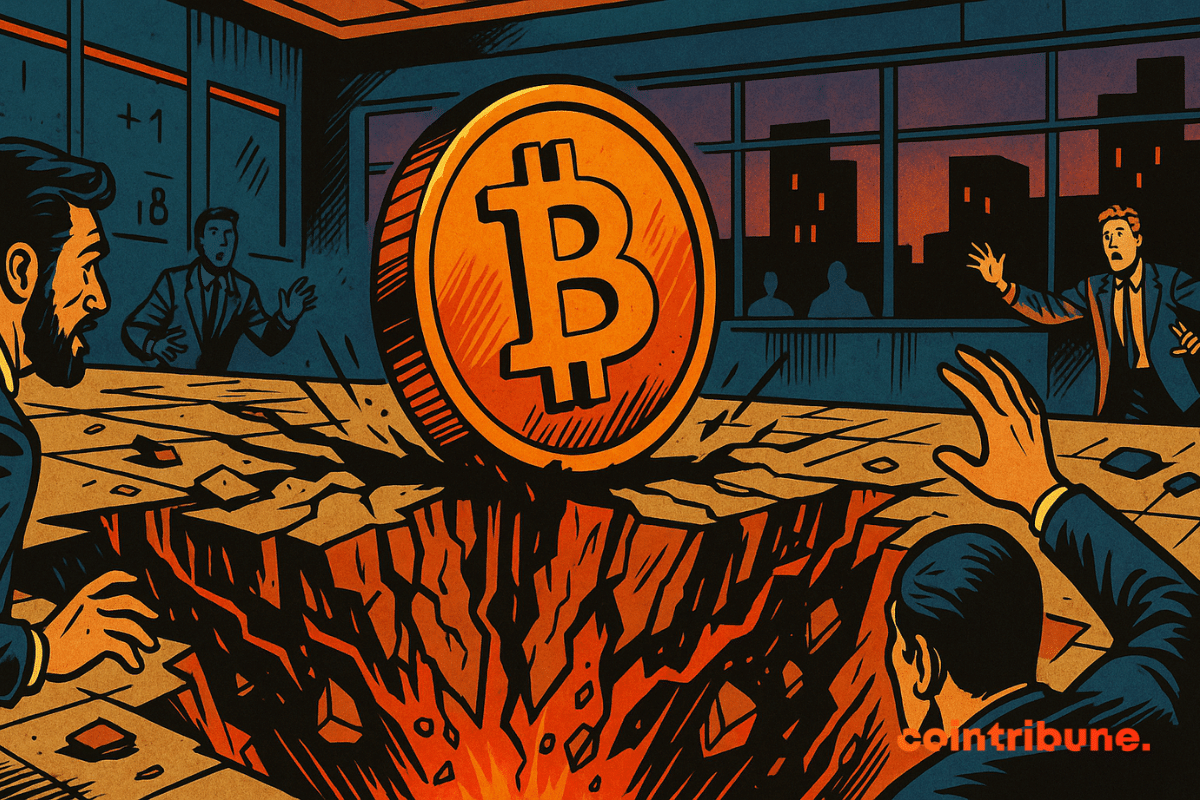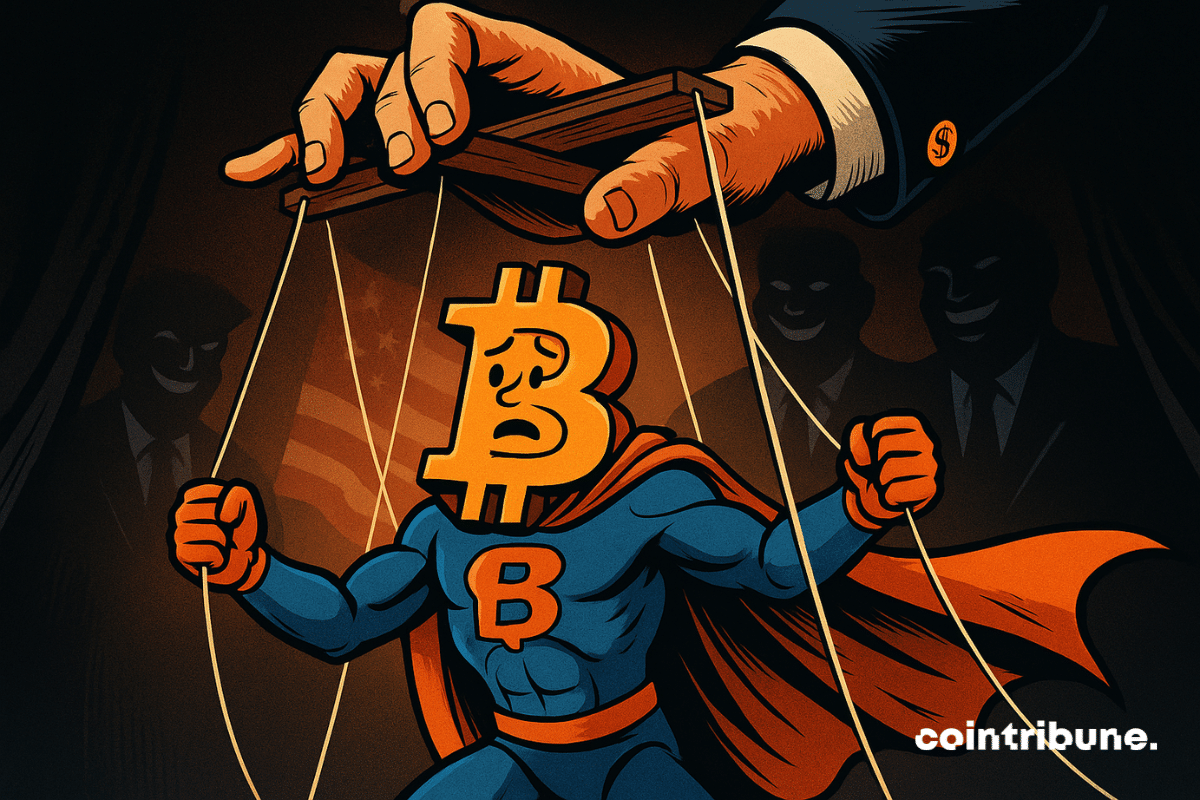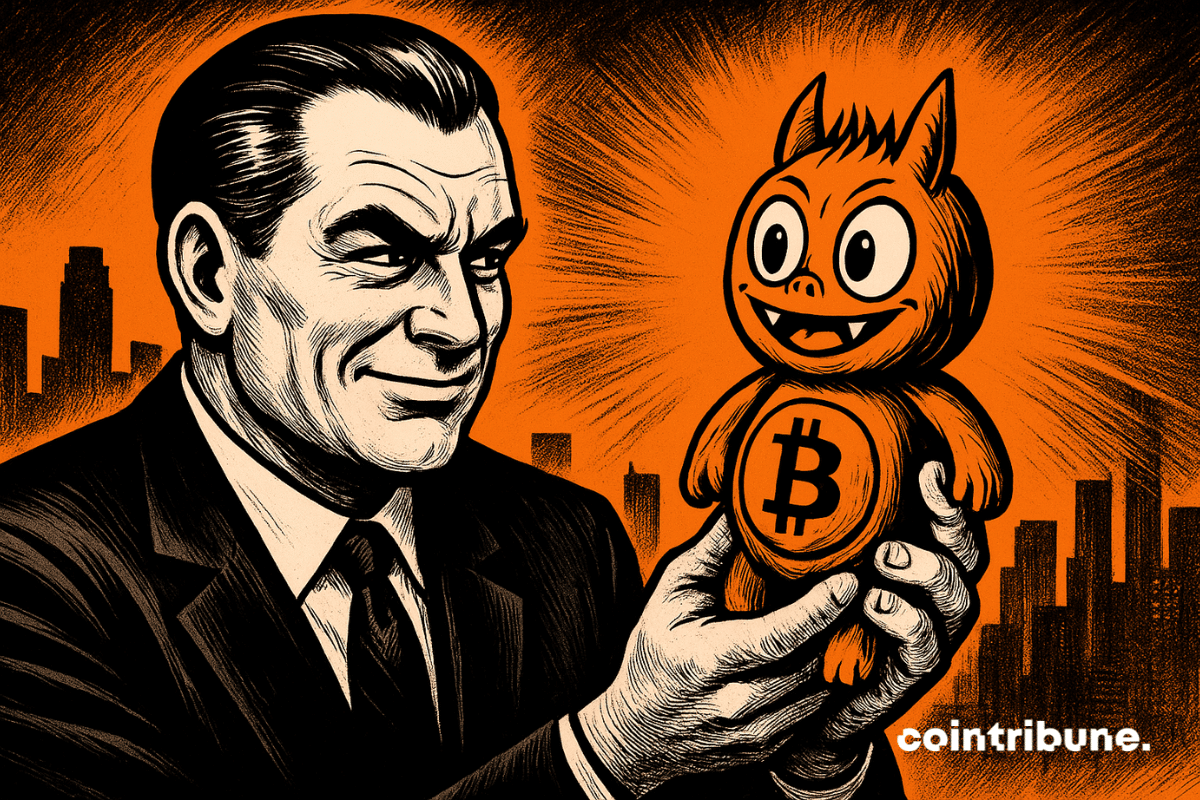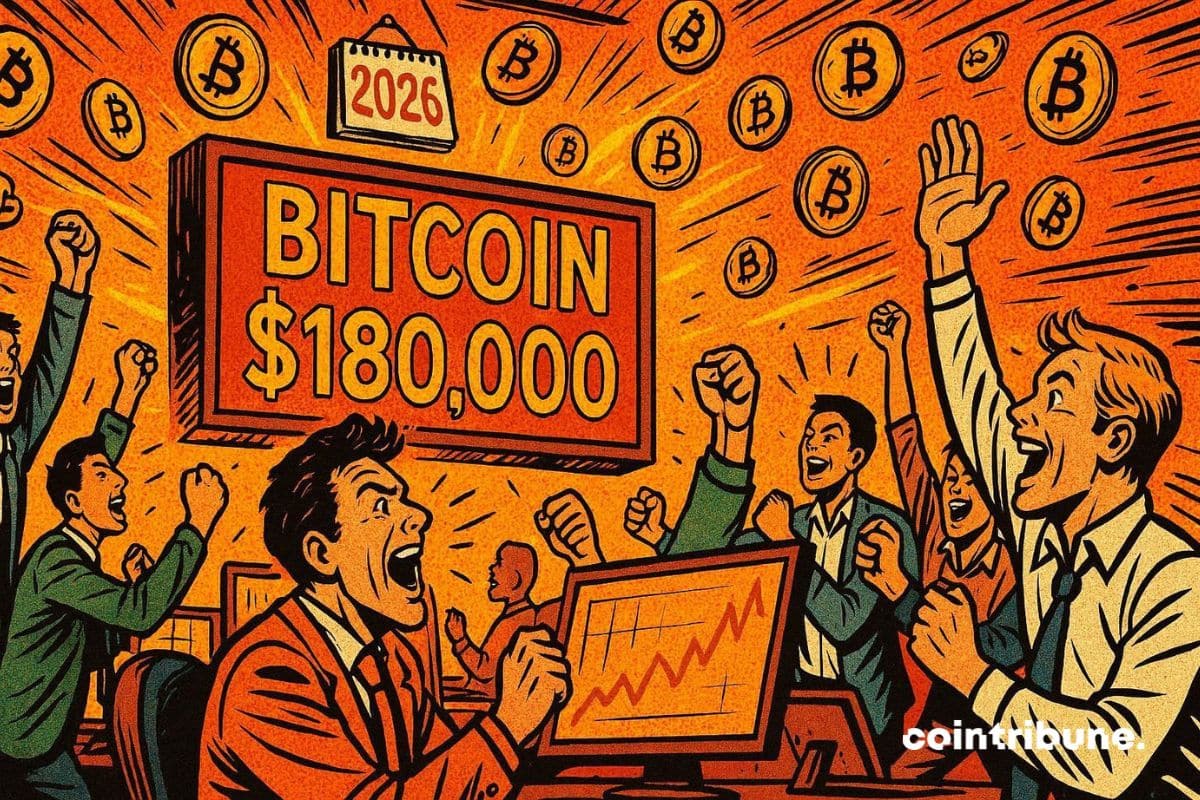The crypto market was hit by a wave of heavy corrections as a rough weekly outing triggered cautious sentiment among investors. During the downturn, heavy liquidations were recorded as some whales took profits while others moved to limit losses. On-chain data shows increased activity from large Bitcoin and Ethereum holders. In fact, U.S. spot Bitcoin and Ether ETFs recorded combined outflows of over $580 million on Monday, extending a broader trend of capital exits. As these heavy outflows persisted, market watchers observed whales rotating capital into a new game-based memecoin project.
Theme Bitcoin (BTC)
Kindly MD thought it could reinvent itself with bitcoin. Listed on the Nasdaq, the company refocused its strategy around the flagship asset after its merger with Nakamoto Holdings. However, the initial euphoria gave way to a sharp drop in the price, resulting in a formal warning from the American stock exchange. Without a rapid recovery, the company now risks delisting.
Bitcoin’s Lightning Network has reached a new capacity record as major exchanges add more funds and developers roll out new tools. At the same time, an upgrade to Taproot Assets is pushing Bitcoin closer to supporting multiple asset types on its base ecosystem.
The quantum threat looms over Bitcoin. Charles Edwards, founder of the Capriole fund, issues a clear warning: without adequate protection by 2028, the king of cryptos could collapse. A prediction that resonates as the market is already experiencing turbulence.
The US Senate Banking Committee has just postponed crucial hearings on crypto market regulation to 2026. This decision comes as the industry was eagerly awaiting clear rules to emerge from legal uncertainty. Why this new delay, and what are the consequences for the sector?
Bitcoin made no noise. It simply resisted. In a crypto market that crumbled silently, the leading crypto fell, yes, but it fell less than the rest. And in this kind of quarter, "less worse" becomes a performance. The data cited by Glassnode mention a persistent relative weakness in almost all segments against BTC, as if liquidity, instead of exploring, had regrouped around the main mast.
Grayscale shakes up certainties. In its latest report, the asset manager anticipates a new ATH for bitcoin by June 2026, breaking with the traditional four-year cycle. Against a backdrop of rising public debt, inflationary pressure, and a changing regulatory framework in the United States, this projection relies on clear macroeconomic signals. At a time when trust in fiat currencies is eroding, Grayscale sees bitcoin as a safe haven asset undergoing a structural transformation. Such a vision challenges and redefines market benchmarks.
Bitcoin has outperformed most altcoins over the past three months despite a broader market pullback. As investors rotated capital toward BTC, sectors such as Ethereum, AI tokens, and memecoins recorded significantly deeper declines.
For the third consecutive week, crypto ETPs have attracted new capital, according to CoinShares. Last week, net inflows accelerated further, extending an already strong sequence after the previous two weeks. In detail, the momentum is mainly American. The United States accounts for the majority of purchases, far ahead of Germany and Canada, while Switzerland stands out against the trend with net outflows during the period.
MetaMask has reached a long-awaited milestone: the wallet, long associated with Ethereum, now natively supports bitcoin. The announcement was made official on December 15, 2025, with the promise of further blockchain integrations in 2026.
Bitcoin falls, Saylor buys. Two billion injected in two weeks, while the market panics. What if, after all, the crypto oracle wore a tie and sold shares?
Bitcoin suddenly dropped to 86,700 dollars on Monday, December 15, triggering more than 210 million dollars in liquidations in one hour. This rapid and unexpected move surprised the market, recalling the strong vulnerability of cryptos to volatility and economic tensions.
Experts warn that advances in quantum computing could one day threaten Satoshi’s Bitcoin, potentially affecting market prices while the majority of coins stay protected.
Bitcoin at $180,000 in 2026? Not so fast, according to Barclays. While some analysts predict a historic bull run, the British bank anticipates a bleak year for crypto. Between caution and optimism, who is right?
Bitcoin increasingly moved independently from US stocks in the second half of 2025. While equities benefited from rate cuts and strong earnings, Bitcoin entered a correction after its October peak, highlighting a clear market divergence.
The Bank of Japan is about to break with three decades of accommodative monetary policy. An almost certain rate hike puts markets under pressure. Contrary to usual expectations focused on the Fed or the ECB, it is Tokyo that worries. For bitcoin, the prospect of a stronger yen and the drying up of the carry trade revives fears of a liquidity shock. In an already fragile market, this pivot could redefine short-term balances.
While markets remain under pressure, bitcoin is moving in an unusual calm. Stuck around 90,000 dollars, the asset shows volatility at its lowest. For several analysts, this phase of stagnation signals a major movement to come. Technical signals converge towards an imminent range breakout.
While Powell gives mixed signals, bitcoin wavers: between rally promises and upsetting votes, traders hesitate... and ETFs sneeze.
Bitcoin is positioned for strong growth in 2026 as shifting market dynamics and supportive macro conditions take effect.
While Bitcoin ETFs attract massive institutional inflows and macroeconomic conditions argue for a rebound in risky assets, the price remains surprisingly stuck below 90,000 dollars. This stagnation, out of sync with the prevailing bullish signals, points to invisible forces restricting its progress. Between yield strategies and sophisticated arbitrage, a more discreet mechanism seems to weigh on the market just as investors expect a new momentum.
The continuous decline of bitcoin reserves on Binance attracts the attention of analysts as the asset trades near $93,000. The latest data from CryptoQuant confirms an unprecedented drop, raising questions about the current market structure. This movement, far from indicating immediate weakness, invites examination of what drives these fund outflows and what they truly reveal about bitcoin's dynamics.
There are companies that enter an index like entering a club. And others that enter like triggering an awkward conversation at the table. Strategy clearly belongs to the second category: a listed company, ex-MicroStrategy, becoming primarily a bitcoin accumulation machine. However, during the annual Nasdaq 100 rebalancing announced on December 13, 2025, it did not drop out. The first real test passed since its arrival last December.
John Ameriks does not believe in Bitcoin. The Vanguard executive even compares it to those Labubu plush toys that went viral. Surprising, when you know that the financial giant actually allows its clients to trade crypto ETFs on its platform. A revealing inconsistency of the persistent discomfort in traditional finance.
The crypto market has just experienced a spectacular collapse: spot volumes have dropped by 60%, a level unseen for months. But behind this apparent lull may lie a rare opportunity. Experts are divided: historical rebound or trap to avoid?
As the Bitcoin network crosses the zetahash threshold, the profitability of mining companies collapses. The hash price has fallen below 40 dollars per PH/s/day, a critical level that threatens the viability of many players. Faced with this paradox, companies in the sector are redirecting their strategies towards renewable energies. However, behind the ecological argument, it is an economic survival logic that dominates, revealing a profound transformation of the mining energy model.
While macroeconomic uncertainties weigh on this year’s end, every move of the Federal Reserve is closely watched. Last Wednesday, the Fed cut its rates for the third consecutive time, causing an immediate reaction in the crypto market. Bitcoin jumped beyond 93,000 dollars, driven by a renewed appetite for risk. This unexpected rebound, against the backdrop of looser monetary policy, raises as many expectations as doubts.
Bhutan is pushing its digital economy forward by placing portions of its traditional reserves on blockchain infrastructure. As tokenized real-world assets gain momentum, the country is securing an early foothold. The introduction of TER, a gold-backed token from Gelephu Mindfulness City (GMC), strengthens Bhutan’s ongoing blockchain plans.
Wall Street vibrates for a ghost! Satoshi Nakamoto appears at the NYSE… with a statue. From code to statues, bitcoin claims its place in the temple of capitalism.
The $100,000 threshold for bitcoin fascinates as much as it divides. A symbol of global adoption and a completed bull cycle, it remains, approaching the end of the year, a goal that is moving away. On predictive markets, conviction is eroding: bettors no longer believe in it. Between uncertain monetary policy and the exhaustion of bullish flows, the momentum seems suspended. The dominant scenario is no longer the explosion, but waiting. And in this in-between, bitcoin plays a more strategic than euphoric game.
Bitcoin could explode in 2026, according to traders. After the Fed rate cuts, bets focus on ambitious targets: $130,000, even $180,000. Why do experts ignore the "Santa rally" to bet on next year?

